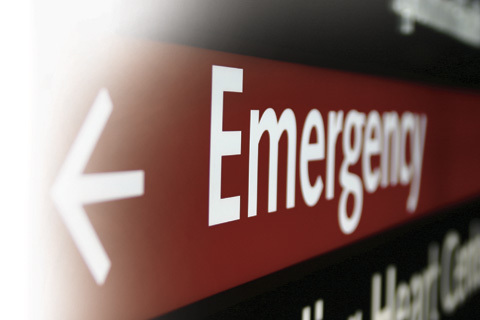The state of Washington is limiting Medicaid reimbursement for emergency room visits in an attempt to reduce the state’s $2 billion budget deficit.
Expected to save the state $33 million from the General Fund and $38.8 million in other funds, the decision was part of a cost-savings plan introduced in the state’s 2011 legislative session, which took effect in April of this year. Roger Stark, M.D., a health care analyst for the Washington Policy Center, says the decision is in response to budgetary challenges like those in many other states.
“Washington state is responsible for roughly 43 percent of Medicaid costs” incurred by state residents, said Stark. “Any funds state taxpayers do not have to contribute to the Medicaid program help balance the budget.”
What Makes an Emergency?
The cuts focus on about 500 diagnoses, decided on by multiple state organizations including the Washington State Medical Association and the Washington State Hospital Association. According to Jeff Thompson, M.D., the Washington Medicaid program’s chief medical officer, the state has created an exclusion and inclusion list to determine what is medically necessary for a patient.
“While there are differences between what we were doing before and what we’re doing now, there is no impact on the client,” he said. “There will be no emergency fees and no balanced billing. We are actually working with communities to reduce non-emergent care, so there will be a big education program, but as far as any fear that they will have to pay for ER visits or be denied an ER visit, that will not happen with this policy. They may be referred to their primary care doctor, but that would be after all the screening would be done and it would be appropriate for them to go.”
Thompson says emergency room visits are now limited to three non-emergent visits per year under the state’s Medicaid program.
Lawmakers Deciding Care
Johnese Spisso, University of Washington Medicine health system vice president, says some health professionals in the state believe payment for individuals’ health emergencies should not be determined by a need for budget cuts.
“Based on the federal law on emergency treatment … we have a federal mandate to screen and evaluate any patient that presents,” said Spisso. “Most patients that come to urgent have something that is major. If this is not done correctly, it has some significant patient safety issues.”
Spisso says reduced emergency care options may harm the state’s underserved population.
“We, like many other health care providers in the state, are concerned about the new proposed legislation which would end payments for visits that are going to be of an urgent care nature,” said Spisso. “Particularly with the patient populations we serve, the safety net population, patients who are homeless and who oftentimes present first to the urgent care department before any are established with health care services.”
Stark says restrictions of this type are an unavoidable result of Medicaid’s overextended nature in a time of economic strain.
“Only the physician seeing the patient in the emergency room can make the determination of appropriate diagnosis and treatment,” Stark said. “Unfortunately, as in any entitlement, our Medicaid patients are at the mercy of lawmakers to determine the quality and amount of their health care.”
Changing Patient Behavior
Spisso says reimbursement reductions won’t have the effect the legislature intended.
“Just taking away payment doesn’t necessarily change patient behaviors,” Spisso said. “We’re working to look at what we need to do to have better access after hours for some of our clinics as well, but we really don’t control that run and pace of the patient’s behavior.”
Spisso notes the UW Medicine health system has implemented medical home pilots and runs a 24-hour nurse advice line in hope of reducing unnecessary costs. But she says an evolution toward new practices will take time.
“Pulling out these things from hospitals and physicians really erodes our ability to get to where we need to go,” she said.
Systemic Problems with Medicaid
Thompson said Medicaid patients routinely use the emergency room in lieu of other routes to care, which drives up the cost to the system.
“I think the essential tenet is we need to improve access to quality affordable health care,” Thompson said. “There is a dollar amount in there, but we also have to right-size health care.… I think locally and nationally the goal is to try to get people a medical home. We want to make sure that we can right-size them into primary care.”
Thompson gave the example of a woman utilizing an emergency room to confirm a pregnancy.
“If she went to a primary care she could get her prenatal vitamins, schedule prenatal visits, and get prenatal counseling,” Thompson said.
Stark notes Medicaid patients’ overuse of emergency rooms is a systemic problem. A 2011 report from the National Center for Health Statistics (NCHS) stated nearly one-third of Medicaid enrollees used the emergency room at least once during a 12-month period, whereas fewer than one in five individuals with private health insurance or no insurance did so.
“Unpaid ER visits are simply a part of the overall Medicaid problem,” Stark said. “A much better plan would be to give our Medicaid patients vouchers and let them, with their physicians, make their own health care decisions.”




